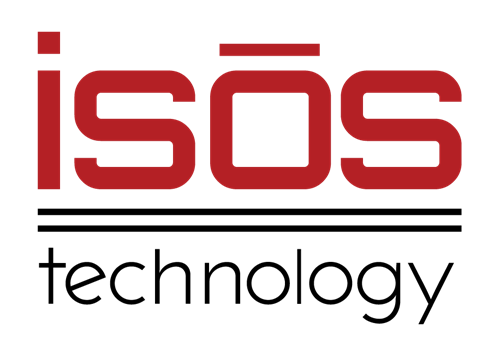 Key Takeaways
Key Takeaways
- Strategic Consolidation Delivers Multiple Benefits: Atlassian instance consolidation goes beyond cost savings, delivering improved collaboration, standardized processes, enhanced governance, and strategic alignment. Organizations typically achieve 20-30% reduction in total cost of ownership while significantly improving operational efficiency.
- Expert Guidance Ensures Successful Outcomes: Instance consolidation requires specialized expertise and proven methodologies. Isos Technology's experience with complex migrations ensures that consolidation projects are executed efficiently, with minimal disruption to ongoing operations and maximum preservation of essential capabilities.
- Phased Implementation Minimizes Risk: Rather than attempting a "big bang" migration, a phased approach allows for testing and validation at each step. This approach minimizes risk, maintains business continuity, and allows for strategy adjustments based on feedback and results.
- Consolidation Creates Foundation for Future Success: Beyond addressing immediate challenges, instance consolidation positions organizations for future growth and innovation. The unified, well-governed environment supports scalability, accelerates innovation, enhances cloud readiness, and strengthens strategic alignment.
- Comprehensive Planning Drives Success: Successful consolidation begins with thorough assessment and strategic planning. By understanding the current environment, defining clear objectives, and developing a detailed roadmap, organizations can ensure that consolidation delivers maximum value while minimizing disruption.
Organizations often accumulate multiple Atlassian instances for various reasons—acquisitions, departmental silos, or evolving IT practices. This proliferation creates significant challenges that impact efficiency and bottom-line results.
Managing multiple Atlassian instances means your IT team spends valuable time maintaining, upgrading, and troubleshooting separate environments instead of focusing on strategic initiatives. According to Atlassian's documentation, organizations with consolidated instances can redirect IT resources from maintenance to optimization, enhancing performance and building integration automation. This shift transforms your IT team from maintenance operators to strategic enablers.
The financial impact of multiple instances extends beyond obvious licensing costs. Each instance requires its own infrastructure, backup systems, and administrative overhead. By consolidating instances, organizations can deploy Atlassian Data Center products in a clustered architecture, scaling infrastructure without proportional overhead increases. During consolidation, you can audit user activity and app usage, often revealing opportunities to optimize licensing and eliminate redundant applications that serve similar functions.
Multiple instances also create data silos that hinder collaboration and visibility. Teams working in separate instances cannot easily share information, track dependencies across projects, or maintain consistent workflows. This fragmentation undermines the very collaboration Atlassian tools are designed to enable. Consolidation creates a unified environment where teams can work together seamlessly, with standardized processes and complete visibility across projects and departments.
For organizations operating in regulated industries or managing sensitive information, multiple instances complicate governance and compliance. Each instance requires its own security controls, audit procedures, and compliance monitoring. Consolidation allows for centralized governance with consistent security policies, access controls, and audit trails across all Atlassian workloads.
The case for consolidation becomes even stronger during mergers and acquisitions. As Isos Technology notes, "Despite the incredible benefits to be gained, it's enough to cause even the most forward-thinking organizations to delay the transition. Still, with careful planning and the help of an experienced Atlassian partner, the process can be streamlined, the risk can be minimized, and your organization can begin reaping the benefits that come from overarching governance of Atlassian tools."
Key Benefits of Instance Consolidation with Isos Tech
Consolidating Atlassian instances delivers transformative benefits that extend far beyond simple cost savings. With Isos Technology's expertise guiding the process, organizations can realize substantial advantages across multiple dimensions.
The financial impact of consolidation is immediate and significant. By merging multiple instances, organizations eliminate redundant licensing costs and reduce infrastructure requirements. According to Atlassian, "Consolidating also gives your IT team the opportunity to look critically at usage. Often, organizations purchase seats for every member of their team, but some people may not be using every product." This audit process frequently reveals substantial cost-saving opportunities. Additionally, app rationalization during consolidation identifies and eliminates duplicate or underutilized applications, further reducing expenses.
Consolidation dramatically improves operational efficiency by standardizing processes and reducing administrative overhead. Rather than maintaining multiple environments with different configurations, workflows, and customizations, IT teams can focus on optimizing a single, unified instance. Atlassian notes that "By consolidating your instances, you'll cut the amount of time spent on upgrading and maintaining all of them." This efficiency extends to user management, security administration, and performance optimization.
Data integration represents one of the most valuable benefits of instance consolidation. As CorpTec explains, "Consolidating your Atlassian instances can help you map data efficiently and establish clear connections between data points across different instances." This integration eliminates information silos, enabling teams to collaborate effectively across departments and functions. With consolidated data, organizations gain comprehensive visibility into projects, resources, and dependencies, supporting better decision-making and resource allocation.
Standardized workflows and processes emerge naturally from consolidation efforts. Rather than maintaining different approaches across instances, organizations can implement consistent best practices throughout the enterprise. This standardization improves quality, reduces errors, and makes training and onboarding more efficient. Users benefit from consistent experiences regardless of which projects or departments they work with.
Scalability improves dramatically with consolidated instances. As Atlassian explains, "Instead of having to add physical infrastructure to support your teams at scale, consolidate your instances and deploy your Data Center products in a clustered architecture." This approach allows organizations to accommodate growth without proportional increases in complexity or cost. The consolidated environment provides a foundation for future expansion, whether through organic growth or additional mergers and acquisitions.
Working with Isos Technology for instance consolidation brings additional advantages through their specialized expertise. As stated on their website, Isos Technology provides "Consolidation of Atlassian Instances - Merge multiple Atlassian instances into a unified, streamlined environment, optimizing resources and improving governance." Their experience with complex migrations ensures that the consolidation process is executed efficiently, with minimal disruption to ongoing operations.
Proven Consolidation Strategies and Best Practices
Successful instance consolidation requires a strategic approach that balances technical considerations with organizational needs. Isos Technology has developed proven methodologies that ensure successful outcomes while minimizing disruption.
Comprehensive assessment and planning form the foundation of successful consolidation. Before any technical work begins, Isos Technology conducts a thorough inventory of existing instances, documenting configurations, customizations, workflows, and data structures. This assessment identifies similarities and differences across instances, potential integration challenges, and opportunities for standardization. The planning phase establishes clear objectives, timelines, and success criteria, ensuring alignment across stakeholders.
Data cleansing and normalization represent critical pre-migration activities. According to Atlassian, "When your teams rely heavily on software to get their job done, those products accumulate a lot of data – some valuable, some not so much. That's why it's important to look at your instances and clean up where you can." This cleanup process identifies and removes obsolete projects, unused custom fields, and outdated configurations. Data normalization ensures consistency across instances, simplifying the migration process and improving data quality in the consolidated environment.
Phased implementation minimizes disruption and risk during consolidation. Rather than attempting a "big bang" migration, Isos Technology typically recommends a gradual approach. As Atlassian advises, "Instead of moving everything all at once, choose the most important things to move first." This phased approach allows for testing and validation at each step, with opportunities to adjust the strategy based on feedback and results. Teams can continue working throughout the process, with minimal impact on productivity.
Governance and standardization establish the foundation for long-term success. During consolidation, Isos Technology works with clients to develop consistent governance frameworks, including user management, access controls, workflow approvals, and change management processes. These standardized approaches ensure that the consolidated instance remains well-organized and efficient as it grows and evolves.
Communication and training are essential for user adoption. Consolidation often introduces changes to familiar workflows and interfaces, requiring clear communication and comprehensive training. Isos Technology develops communication plans that explain the rationale for consolidation, outline the implementation process, and highlight benefits for users. Training programs ensure that teams can effectively use the consolidated instance, taking advantage of new capabilities and integrations.
Post-consolidation optimization maximizes the value of the unified environment. After the technical consolidation is complete, Isos Technology works with clients to fine-tune the environment, enhancing performance, security, and usability. This optimization phase may include implementing additional integrations, refining workflows, or deploying new capabilities that leverage the consolidated platform.
Technical Approaches to Instance Consolidation
The technical execution of instance consolidation requires specialized expertise and tools. Isos Technology employs proven methodologies tailored to each client's specific environment and requirements.
Data migration tools and techniques form the core of the technical consolidation process. Atlassian recommends that organizations "invest in tools like Configuration Manager for Jira and Project Configurator for Jira can help you move your data early in the process and make your migration run smoother." These specialized tools facilitate the transfer of projects, spaces, and configurations between instances, preserving relationships and attachments. Isos Technology has extensive experience with these tools, along with custom scripts and utilities that address specific migration challenges.
Handling duplicate entities represents a common challenge during consolidation. When merging instances, organizations often encounter duplicate project keys, space names, or workflow definitions. According to Atlassian, "Space keys or project keys can be one of the trickier parts of instance consolidation. Before you migrate to Data Center, review your space and project keys to identify any duplicates." Isos Technology employs proven techniques for resolving these conflicts, including renaming, merging, or selectively migrating entities based on business requirements.
Integration with external systems must be maintained throughout the consolidation process. Most Atlassian instances connect with other enterprise systems, such as identity providers, CI/CD pipelines, or reporting tools. Isos Technology ensures that these integrations are preserved or enhanced during consolidation, preventing disruption to dependent processes. This may involve reconfiguring integration points, updating authentication mechanisms, or implementing new integration patterns that leverage the consolidated environment.
Data quality assurance ensures that information remains accurate and complete throughout the migration. Isos Technology implements comprehensive validation processes that verify data integrity at each stage of the consolidation. These processes include automated testing, data comparison utilities, and manual verification of critical information. This rigorous approach minimizes the risk of data loss or corruption during the migration.
Performance optimization ensures that the consolidated instance delivers excellent user experience even with increased load. As separate instances are merged, the consolidated environment must handle more users, projects, and data. Isos Technology applies performance tuning techniques specific to Atlassian products, including database optimization, application configuration adjustments, and infrastructure scaling. These optimizations ensure that the consolidated instance performs well under real-world conditions.
Security and access control reconciliation aligns permissions and security models across the merged instances. Different instances often implement different security approaches, creating challenges during consolidation. Isos Technology develops comprehensive security models that preserve appropriate access controls while eliminating unnecessary complexity. This reconciliation process ensures that users have the access they need without creating security vulnerabilities.
Real-World Success: Instance Consolidation Case Studies
Isos Technology has helped numerous organizations successfully consolidate their Atlassian instances, delivering significant benefits while minimizing disruption. These case studies illustrate the transformative impact of well-executed consolidation strategies.
A global financial services firm faced challenges managing five separate Jira instances that had accumulated through acquisitions and departmental initiatives. This fragmentation created significant inefficiencies, with inconsistent workflows, duplicate licenses, and limited visibility across projects. Working with Isos Technology, the firm consolidated these instances into a unified Jira Data Center environment. The consolidation process included comprehensive data cleansing, workflow standardization, and user permission reconciliation. The results were impressive: 30% reduction in licensing costs, 40% decrease in administrative overhead, and significantly improved collaboration across previously siloed teams. The consolidated instance provided a foundation for future growth, with scalable architecture and standardized governance.
A government agency struggled with three separate Confluence instances that had evolved independently across different departments. This fragmentation hindered knowledge sharing and created confusion for users who needed to access information across organizational boundaries. Isos Technology implemented a phased consolidation approach, carefully migrating spaces while preserving critical relationships and attachments. The consolidation included comprehensive space restructuring, template standardization, and permission rationalization. The unified Confluence environment dramatically improved information accessibility, with users reporting 50% faster access to needed documentation. The agency also realized significant cost savings through reduced infrastructure and licensing requirements.
A healthcare technology company needed to merge Atlassian environments following a major acquisition. Both organizations relied heavily on the Atlassian suite, including Jira Software, Jira Service Management, and Confluence, but with different configurations, workflows, and customizations. Isos Technology developed a comprehensive consolidation strategy that preserved essential capabilities while establishing standardized approaches for the combined organization. The phased implementation minimized disruption to ongoing operations, with careful attention to regulatory compliance requirements. The consolidated environment supported seamless collaboration between the merged organizations, accelerating integration and enabling faster innovation. The company achieved complete ROI within nine months through reduced licensing costs, eliminated redundant applications, and improved operational efficiency.
A manufacturing enterprise sought to consolidate multiple Bitbucket instances that had evolved across development teams. This fragmentation complicated code sharing, hindered standardization of development practices, and created security challenges. Isos Technology implemented a consolidation strategy that preserved development history while establishing consistent branching strategies, code review processes, and integration with CI/CD pipelines. The unified Bitbucket environment significantly improved code quality through standardized practices, enhanced security through consistent access controls, and accelerated development through improved collaboration. The consolidated instance also simplified compliance with industry regulations by implementing consistent audit trails and approval processes.
Overcoming Common Consolidation Challenges
Instance consolidation presents various challenges that must be addressed for successful outcomes. Isos Technology has developed proven approaches to overcome these obstacles while minimizing risk and disruption.
Resistance to change represents one of the most significant challenges during consolidation. Teams often become attached to their customized instances and may resist moving to a standardized environment. Isos Technology addresses this challenge through comprehensive stakeholder engagement, clearly communicating the benefits of consolidation while acknowledging concerns. By involving key users in the planning process and demonstrating how their essential requirements will be met in the consolidated instance, Isos Technology builds buy-in and support across the organization.
Data mapping complexity increases with the number and diversity of instances being consolidated. Different instances often implement similar concepts in different ways, creating challenges when merging data. Isos Technology employs sophisticated data analysis techniques to identify these variations and develop appropriate mapping strategies. This process may include data transformation, field normalization, or the creation of new structures that accommodate diverse requirements. The goal is to preserve essential information while establishing consistent approaches in the consolidated environment.
Maintaining business continuity throughout the consolidation process is essential. Organizations cannot afford significant disruption to critical processes during migration. Isos Technology implements carefully planned cutover strategies that minimize downtime and ensure continuous access to essential information. These strategies may include parallel operation during transition periods, phased migrations that prioritize less critical components, or weekend cutover operations for mission-critical systems. Throughout the process, comprehensive testing validates functionality and performance to prevent unexpected issues.
Integration with external systems must be preserved during consolidation. Most Atlassian instances connect with other enterprise applications, and these integrations must continue functioning throughout the migration. Isos Technology documents all integration points and develops migration strategies that maintain these connections. This may involve reconfiguring integration mechanisms, updating authentication methods, or implementing new integration patterns that leverage the consolidated environment. Comprehensive testing validates that all integrations function correctly after consolidation.
Performance optimization ensures that the consolidated instance delivers excellent user experience despite increased load. As separate instances merge, the consolidated environment must handle more users, projects, and data. Isos Technology applies performance tuning techniques specific to Atlassian products, including database optimization, application configuration adjustments, and infrastructure scaling. These optimizations ensure that the consolidated instance performs well under real-world conditions.
Planning Your Instance Consolidation Journey with Isos Tech
Embarking on an instance consolidation initiative requires careful planning and expert guidance. Isos Technology offers a structured approach that ensures successful outcomes while minimizing risk and disruption.
The consolidation journey begins with a comprehensive assessment of your current Atlassian landscape. Isos Technology conducts a thorough inventory of existing instances, documenting configurations, customizations, workflows, and integrations. This assessment identifies similarities and differences across instances, potential consolidation challenges, and opportunities for standardization. The assessment phase establishes a clear understanding of the current state, providing the foundation for effective planning.
Strategic planning translates assessment findings into a comprehensive consolidation roadmap. Isos Technology works with key stakeholders to define consolidation objectives, establish success criteria, and develop a phased implementation approach. The planning process addresses technical considerations, business requirements, and organizational factors that influence the consolidation strategy. The resulting roadmap provides a clear path forward, with defined milestones and deliverables.
Implementation follows the established roadmap, with Isos Technology managing the technical execution of the consolidation. This process includes data migration, configuration standardization, workflow alignment, and integration reconfiguration. Isos Technology employs specialized tools and techniques to ensure data integrity and minimize disruption throughout the migration. Comprehensive testing validates functionality and performance at each stage, preventing unexpected issues.
User enablement ensures that teams can effectively leverage the consolidated environment. Isos Technology develops communication plans that explain the rationale for consolidation, outline the implementation process, and highlight benefits for users. Training programs ensure that teams understand new workflows, features, and capabilities available in the consolidated instance. This enablement process accelerates adoption and maximizes the value of the unified environment.
Ongoing optimization continues after the technical consolidation is complete. Isos Technology works with clients to fine-tune the environment, enhancing performance, security, and usability. This optimization phase may include implementing additional integrations, refining workflows, or deploying new capabilities that leverage the consolidated platform. Continuous improvement ensures that the consolidated instance delivers maximum value over time.
Partnership with Isos Technology extends beyond the initial consolidation project. As an Atlassian Platinum Solution Partner, Isos Technology provides ongoing support, maintenance, and strategic guidance for your Atlassian environment. This partnership ensures that your consolidated instance continues to evolve with your business, delivering optimal value and supporting your strategic objectives.
Maximizing ROI: Measuring Consolidation Success
Quantifying the benefits of instance consolidation helps organizations demonstrate return on investment and validate the strategic decision to consolidate. Isos Technology works with clients to establish meaningful metrics and track outcomes across multiple dimensions.
Cost reduction represents one of the most tangible benefits of consolidation. Organizations typically realize savings in multiple areas, including licensing costs, infrastructure expenses, and administrative overhead. Isos Technology helps clients track these savings, comparing pre-consolidation costs with post-consolidation expenses. This analysis often reveals substantial reductions, with many organizations achieving 20-30% lower total cost of ownership for their Atlassian environment.
Efficiency improvements extend beyond direct cost savings. Consolidated instances require less administrative effort for maintenance, upgrades, and support. Isos Technology helps clients measure these efficiency gains, tracking metrics such as time spent on administrative tasks, mean time to resolution for support issues, and frequency of maintenance activities. These measurements typically show significant improvements, with administrative effort often reduced by 40% or more.
User productivity increases as teams benefit from standardized workflows, improved collaboration, and streamlined processes. Isos Technology works with clients to measure these productivity gains, using metrics such as time to complete common tasks, cross-team collaboration frequency, and user satisfaction scores. These measurements typically show meaningful improvements, with users reporting faster access to information and more efficient collaboration across previously siloed teams.
Data quality improves through consolidation, with standardized approaches and eliminated duplication. Isos Technology helps clients measure these improvements, tracking metrics such as duplicate record counts, data consistency across projects, and information accuracy. These measurements typically show significant enhancements, with organizations reporting more reliable information and improved decision-making based on consolidated data.
Governance effectiveness increases with consolidated instances, as organizations implement consistent security policies, access controls, and compliance processes. Isos Technology helps clients measure these improvements, tracking metrics such as security policy compliance, audit finding resolution time, and governance exception frequency. These measurements typically show substantial enhancements, with organizations reporting improved compliance posture and reduced governance overhead.
Long-term strategic value extends beyond immediate operational benefits. Consolidated instances provide a foundation for future growth, innovation, and digital transformation. Isos Technology helps clients track these strategic benefits, measuring metrics such as time to implement new capabilities, ability to respond to business changes, and alignment with strategic objectives. These measurements typically show significant advantages, with organizations reporting greater agility and improved ability to leverage their Atlassian investment for competitive advantage.
Future-Proofing Your Atlassian Environment Through Consolidation
Instance consolidation not only addresses current challenges but also positions organizations for future success. By establishing a unified, well-governed Atlassian environment, consolidation creates a foundation for ongoing evolution and innovation.
Scalability represents a key advantage of consolidated instances. Rather than scaling multiple environments independently, organizations can grow a single, unified instance more efficiently. This scalability supports business growth, whether through organic expansion or mergers and acquisitions. The consolidated architecture, particularly with Atlassian Data Center, provides the foundation for handling increased users, projects, and data volumes without proportional increases in complexity or cost.
Innovation accelerates with consolidated instances, as organizations can implement new capabilities more efficiently across the enterprise. Rather than deploying innovations across multiple environments, changes can be implemented once in the consolidated instance. This efficiency reduces the time and cost associated with innovation, allowing organizations to leverage new Atlassian capabilities more quickly. The standardized environment also provides a consistent foundation for custom development and integration, further enhancing innovation potential.
Cloud readiness improves through consolidation, positioning organizations for potential future cloud migration. As Atlassian continues investing in cloud capabilities, organizations with consolidated instances can more easily evaluate and potentially leverage these offerings. The standardized, well-governed environment established through consolidation simplifies potential cloud transition, reducing complexity and risk. Even for organizations planning to remain on Data Center for the foreseeable future, the consolidated instance provides flexibility for potential hybrid approaches that leverage both deployment models.
Integration capabilities expand with consolidated instances, enabling more comprehensive connections with other enterprise systems. Rather than maintaining separate integration points for each instance, organizations can implement unified integrations that leverage the consolidated environment. This approach simplifies integration architecture, reduces maintenance overhead, and enables more sophisticated integration scenarios. The consolidated instance becomes a central hub in the enterprise architecture, facilitating information flow across systems and departments.
Governance maturity advances through consolidation, as organizations implement consistent policies, processes, and controls across their Atlassian environment. This maturity improves security posture, enhances compliance capabilities, and reduces governance overhead. The standardized environment supports more sophisticated governance approaches, including automated policy enforcement, comprehensive audit trails, and integrated compliance reporting. This maturity positions organizations to address evolving regulatory requirements and security challenges more effectively.
Strategic alignment strengthens as the consolidated Atlassian environment more closely reflects organizational structure and priorities. Rather than maintaining separate instances with different configurations and approaches, the unified environment implements consistent practices aligned with strategic objectives. This alignment ensures that the Atlassian platform effectively supports business goals, delivering maximum value from the investment. The consolidated instance becomes a strategic asset, enabling improved collaboration, knowledge sharing, and process efficiency across the enterprise.
FAQs About Atlassian Instance Consolidation
What is Atlassian instance consolidation and why is it important?
Atlassian instance consolidation is the process of merging multiple separate Atlassian product environments (like Jira, Confluence, or Bitbucket) into a unified, streamlined instance. This process is crucial for organizations dealing with instance sprawl, which often occurs through acquisitions, departmental silos, or organic growth. Consolidation delivers significant benefits including reduced costs, improved collaboration, standardized processes, and enhanced governance. By eliminating redundant systems and establishing a unified environment, organizations can transform their Atlassian landscape from a fragmented collection of tools into a strategic platform that drives productivity and innovation.
How long does an Atlassian instance consolidation project typically take?
The timeline for Atlassian instance consolidation varies based on several factors, including the number and complexity of instances being consolidated, the volume of data being migrated, and the extent of customization in each instance. For smaller consolidations involving 2-3 instances with moderate complexity, projects typically take 2-3 months. More complex consolidations involving multiple products, extensive customizations, or large data volumes may require 4-6 months or longer. Isos Technology employs a phased approach that prioritizes critical components while minimizing disruption to ongoing operations, allowing organizations to realize incremental benefits throughout the consolidation journey.
Can we maintain our customizations and workflows during consolidation?
Yes, essential customizations and workflows can be preserved during consolidation, though this process requires careful planning and expertise. Isos Technology begins with a comprehensive assessment of existing customizations across all instances, identifying which elements are critical for business operations. The consolidation strategy then incorporates these essential customizations into the target environment, often with improvements that enhance functionality and maintainability. While consolidation provides an opportunity to standardize and optimize workflows, Isos Technology ensures that unique requirements are accommodated in the unified instance, preserving the specialized capabilities that teams depend on.
How does instance consolidation affect our users and what training is needed?
Instance consolidation typically introduces changes to familiar workflows, interfaces, and processes, requiring thoughtful change management and training. The impact on users varies depending on the extent of standardization and the differences between source instances. Isos Technology develops comprehensive change management strategies that include clear communication about the consolidation rationale and benefits, detailed documentation of new processes, and targeted training programs. These programs are tailored to different user roles, focusing on the specific changes each group will experience. With proper preparation and support, users typically adapt quickly to the consolidated environment, especially as they experience the benefits of improved collaboration and standardized processes.
What are the cost savings we can expect from instance consolidation?
Organizations typically realize significant cost savings through instance consolidation, though the exact amount varies based on the current environment and consolidation approach. Direct savings come from reduced licensing costs, eliminated redundant applications, and decreased infrastructure expenses. Indirect savings result from lower administrative overhead, improved efficiency, and reduced support requirements. In Isos Technology's experience, organizations commonly achieve 20-30% reduction in total cost of ownership for their Atlassian environment through consolidation. These savings compound over time as the organization avoids the escalating costs of maintaining multiple instances as they grow. A comprehensive ROI analysis during the planning phase can provide more specific projections based on your unique situation.
How does instance consolidation support our cloud migration strategy?
Instance consolidation provides an excellent foundation for potential future cloud migration by simplifying the migration path and reducing complexity. By consolidating multiple instances before considering cloud migration, organizations can eliminate redundant data, standardize configurations, and optimize customizations. This consolidated environment is much easier to migrate than multiple disparate instances, reducing risk and accelerating the transition timeline. Even for organizations planning to remain on Data Center for the foreseeable future, consolidation provides flexibility for potential hybrid approaches that leverage both deployment models. Isos Technology helps clients develop consolidation strategies that align with their long-term deployment plans, whether those involve cloud, Data Center, or hybrid approaches.
Sources:
Atlassian Blog
Isos Technology
Atlassian Enterprise
CorpTec Technology Partners
Sign up to receive more great content
Learn more about Atlassian and how Isos can help by signing up to receive our latest blogs, eBooks, whitepapers and more.













